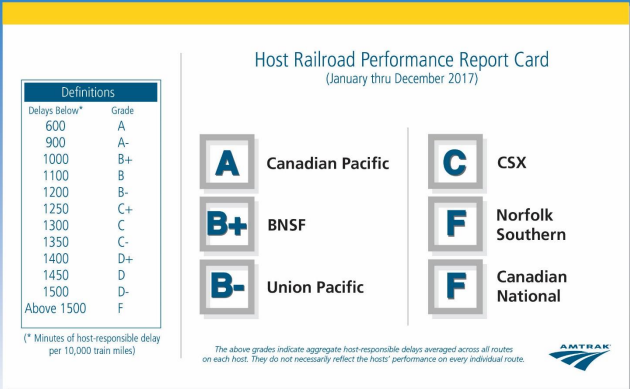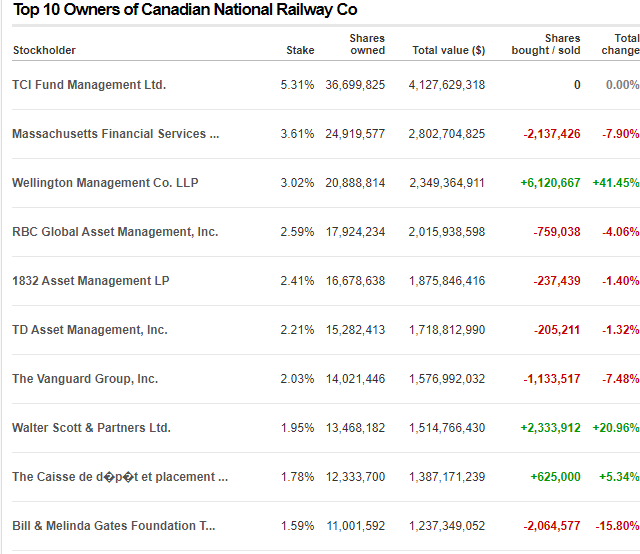C’est pas un problème pour le CN. Ils priorisent leurs trains au maximum. EXO est un parasite sur leur réseau qu’ils doivent accomoder pour de la quiétude politique.

oups
The “CN/CP aren’t cooperative” excuse is just so tired. We’re poor negotiators and unwilling to massively invest in rail like we do for roads and incidentally buses. The low frequency of exo trains and restrictions on boarding for non-STM buses on the island severely limits how much we can get out of this fare integration.
Most excuses are… well excuses and only excuses. Negotiating with CN is hard, but that doesn’t mean we should give up and be content with garbage train service. If we truly want a good, fast, reliable train service (which is the best solution for transit) we have to make that desire public and not negociate behind close doors. If CN really doesn’t want anything to do with our public transit, I think having a lot of pressure from the public is enough bad pr for CN to reconsider their decision.
Metrolinx and even the very frugal CDPQ seem to handle them just fine
If CDPQ can do it why can’t the government ?
Either you don’t know the railway network around Toronto, or you’re in bad faith.
Metrolinx owns most of it’s lakeshore line because CN moved to the north of the city in the 60s, and CN did not use it as a mainline. The CP mainline also does not go through downtown, and the only place where they interfere with GO is on the Milton line. Is it a coincidence that it’s the line with the least service? Also, did you know that the Milton line exists only because the government forced CP to allow it in exchange for not suing after the 1979 Mississauga derailment?
The most important difference though is that Toronto does not have the most important port in Eastern Canada, and the railways yards are not located directly in the centre of the city. This really doesn’t help us.
As for CDPQ, we don’t even know what the terms of the agreement was, so maybe I wouldn’t use that as an example.
The railways are private businesses and primarily deal with other big companies. They are under no obligation to negotiate with anyone, and are certainly not that sensitive to public opinion. I’m not saying there’s no way to negotiate something, but it’ll have to be a very, very sweet deal for them. Why else would they accept anything on land they own?
Maybe in the end the only solution is for us to own the network around Montreal and manage it as a joint terminal company… if only our government could be that creative.
Je sais pas si ça peut avoir un lien mais la caisse a des parts importantes du CN

Hydro Québec a une emprise pour ligne à haute tension au sud de la subdivision Saint-Laurent (et sur une bonne longueur en plus). On pourrait certainement bâtir des voies dans cette emprise, tout en enfouissant la ligne à haute tension.
Great points, but as a mod you could’ve avoided starting your reply in an unnecessarily derisive way. Toronto’s position and rail network are definitely more favourable for commuter rail. But aside from both cities particularism, my takeaway is that over the years the Ontario government significantly improved what were temporary services and steadily identified and acquired portions of high value corridors, while ours have been complacent, relying heavily on buses and the metro, and of course expanding highways. As for CPDQ’s deals with CP and CN; the key point is that deals with railway companies can be made in Montreal. We have branche and disused lines, large roads on which rail row could be expanded, we’re heavily funding some types of infrastructure while neglecting some others… So, while our circumstances makes building our commuter rail network more challenging, what would be in bad faith is assuming that we’ve really been all that diligent in doing so.
I can see how my comment could be misinterpreted, and I’m sorry about that.
My point is that the GTA and Montreal are two very different places with very different histories. GO has existed for much longer than our commuter rail, and geography certainly is an advantage for them. It’s not a good comparison.
That is not to say that nothing can be done. Deals can be made, but our current government seems pretty oblivious to the idea of expanding heavy rail transit, even if the solutions are obvious.
CN will not give their ROW for free. They’ll need a good deal, and only a strong voice in Quebec City will be able to give them that.
Cette idée est vraiment intéressante. Je crois que Waterloo a également enfoui quelques lignes à hautes tension pour son réseau ION.
Idéalement ça prendrait juste une subdivision St-Laurent avec trois voies, dont une réservée pour le CN et le fret, et les deux autres pour Exo, avec un quai central entre ces deux voies à toutes les grandes intersections. Ça permettrait d’électrifier la ligne jusqu’à Pointe-aux-Trembles, de préserver le passage pour les trains de fret tout en donnant une solution rapide et efficace au nord-est de l’île.
Let’s imagine, just for a moment, what would be the impact on land use and transportation if most activities of the Montreal port were moved off island (e.g. new container terminal in Contrecoeur) AND if both CN & CP mail switchyards were moved off island.
That would be massive in terms of right of way available for commuting, HUGE swat of lands for development, much much less trucking on island highways and local networks, de-enclaving of neighborhoods, lower air & noise pollution, etc.
I’m not saying its easy or even possible or even desirable, but lets just imagine some of the benefits.
That would be an insanely good thing for everyone.
- The A-40 could be put underground since hazardous substances trucks will go elsewere.
- The opportunity for transit-first development is huge, since we have tracks and space around them
- Anjou residents will no longer need to do “nuclear alarm thing” drills anymore.
Howevers there are major downsides:
- Ecosystems around the city are going to face major industrialisation
- Decontamination of switchyards are expensive
- There would be an increase of truck traffic on bridges for deliveries.
Honestly I think it’s a possibility. Seing the rise in housing prices, some companies would have a benefit in moving and selling their old plots of land. Just look at angus, it was a railyard until the 1990s. Now it’s a big, densed mixed use neighborhood with decent transit. Of course we could do better today, but I think this scenario is definitly possible in the near future.
![]() Where have I heard this before? Oh wait, it was me.
Where have I heard this before? Oh wait, it was me. ![]() GO/Metrolinx didn’t just suddenly “happen upon” all their ROW, they did the hard yards and negotiated to acquire them. For the segments they couldn’t acquire outright, they negotiated for priority running or minimal disruption, along with track doubling/tripling/quadrupling and frequent passing loops.
GO/Metrolinx didn’t just suddenly “happen upon” all their ROW, they did the hard yards and negotiated to acquire them. For the segments they couldn’t acquire outright, they negotiated for priority running or minimal disruption, along with track doubling/tripling/quadrupling and frequent passing loops.
Please elaborate; CP commuter service in Montreal existed before Toronto had indoor plumbing. ![]() CNoR/CN commuter service was also operating here some 30 years before CN began offering similar service in the Golden Horseshoe to feed the area’s rapid growth after WW2.
CNoR/CN commuter service was also operating here some 30 years before CN began offering similar service in the Golden Horseshoe to feed the area’s rapid growth after WW2.
What I meant was that GO has existed as a government entity 30 years before we created the AMT. STCUM took over two lines in 1982 but the idea to create a Greater Montreal focused entity really took off in the 90s.
That would be extreme, but great! Moving the yards would do wonders for freight traffic on the island. But where would they move to? That’s the big question.
Si je me souviens bien, le CP a déjà eu des plans (je ne sais pas si c’est encore d’actualité) pour déménager sa cour de triage de Côte-Saint-Luc dans la régions de Vaudreuil-Soulanges.
No, not great.
The location of the existing yards, with a super-wide rail corridor available to the west, where the rail freight comes from, good road connections to nearby industries in Laval, St-Laurent, Lachine (which are also served well by road and air networks, providing Montréal with a competitive manufacturing environment), with direct mostly grade separated corridors to the port (neading just a flyover to separate St.-Jerôme trains, or a second track for most of the CN access), and efficient utilisation of limited cross-river capacity, forcing these yards out would be an enormous mistake for the region, for which the only gain may be improved access to the Mascouche line.
In terms of creating an S-bahn style network, congestion on the south shore bridges is a much bigger problem. Moving the main freight yards to the south shore would make that problem irreconcilable.